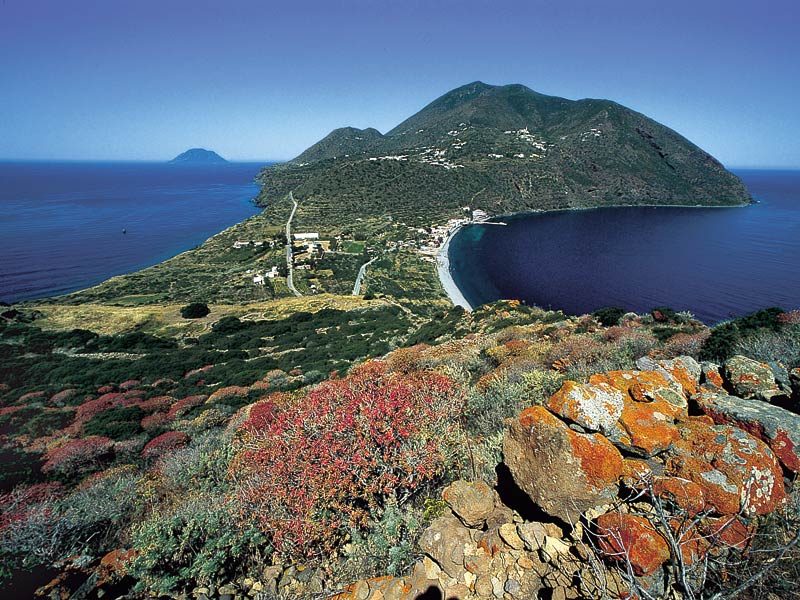Protected Area
Identity Card
- Land Surface Area: 635.93 ha
- Regions: Sicilia
- Provinces: Messina
- Municipalities: Lipari
- Establishment Measures: D.A. 485/44 25/07/1997
- PA Official List: EUAP1128
Riserva Naturale Orientata Isola di Filicudi
The origin of Filicudi is common to all the other islands of the Aeolian archipelago, and is linked to the intense geotectonic activity of the Mediterranean during the Quaternary period, with the stabilization of the Apennines taking place in the Tertiary period. The visible part of the island if the summit of a complex underwater volcanic structure.
Further information (Italian text)
Flora
Called "Orchis of the Aeolian Islands", the caper tree (Capparis spinosa subsp. rupestris) produces in spring-summer wonderful flowers with white petals and tufts of long violaceous stamens.
Further information (Italian text)
Fauna
Mediterranean Monk Seal
A pinniped mammal which has disappeared from the Italian coasts and is endangered in the whole Mediterranean area: there are about 300 individuals surviving among Spain, Mauritania, Tunisia, Greece, and Turkey.
Canna Cliff and Eleonora's Falcon
Canna cliff stands out as a straight and very high keep (over 70 m), formed by the superposition of strongly inclined lava strata along the route to Alicudi, on the north-western side of the island.
Further information (Italian text)







